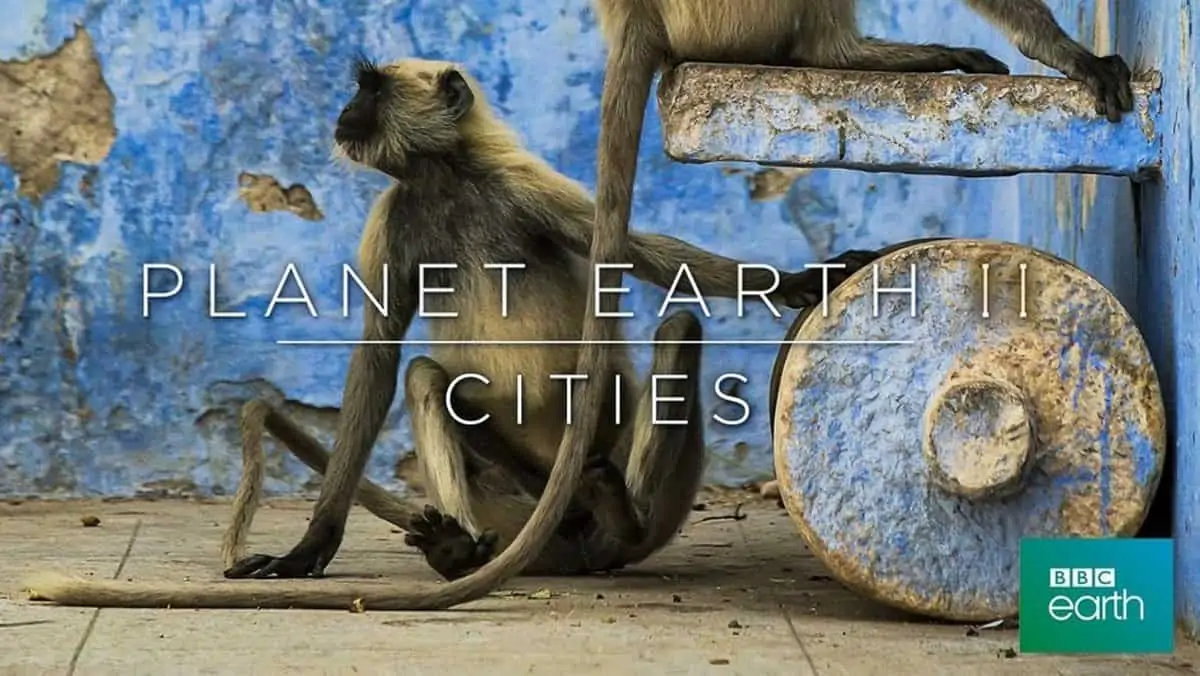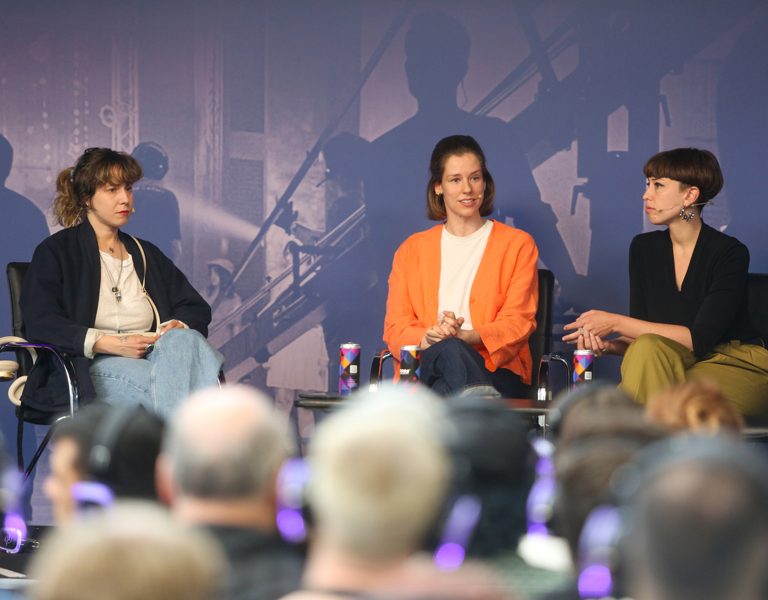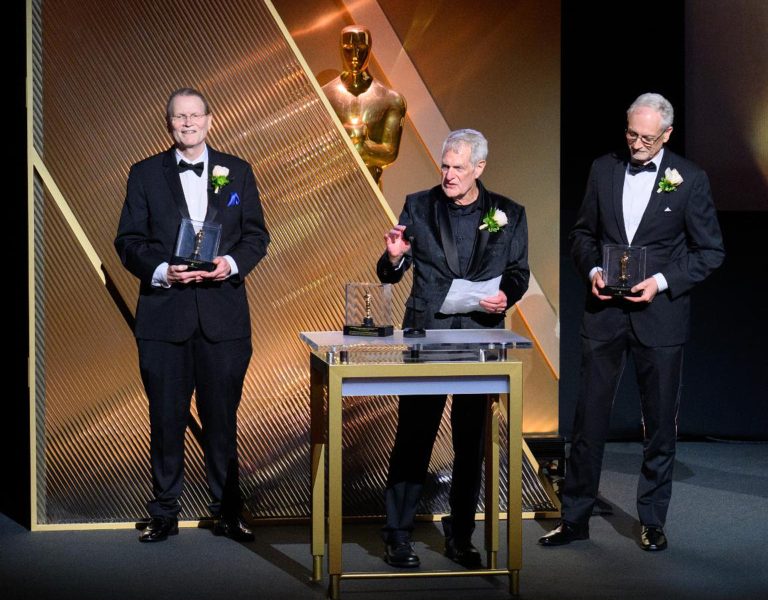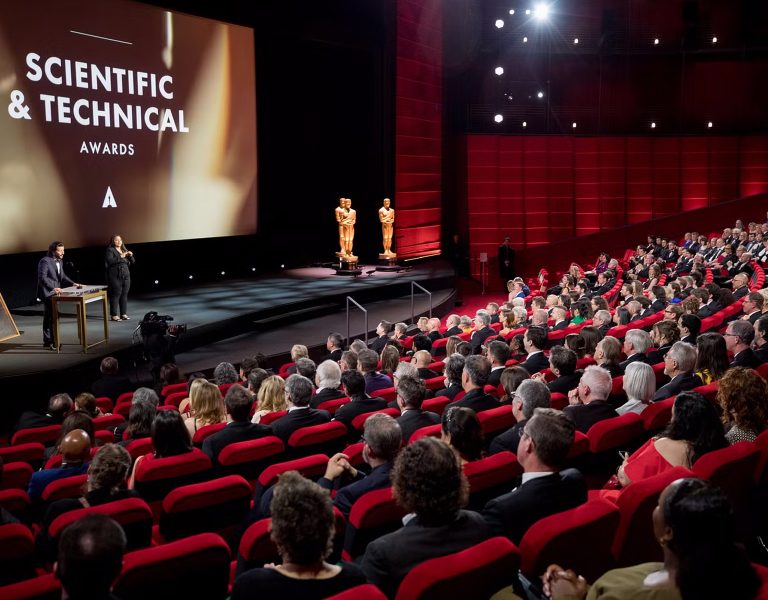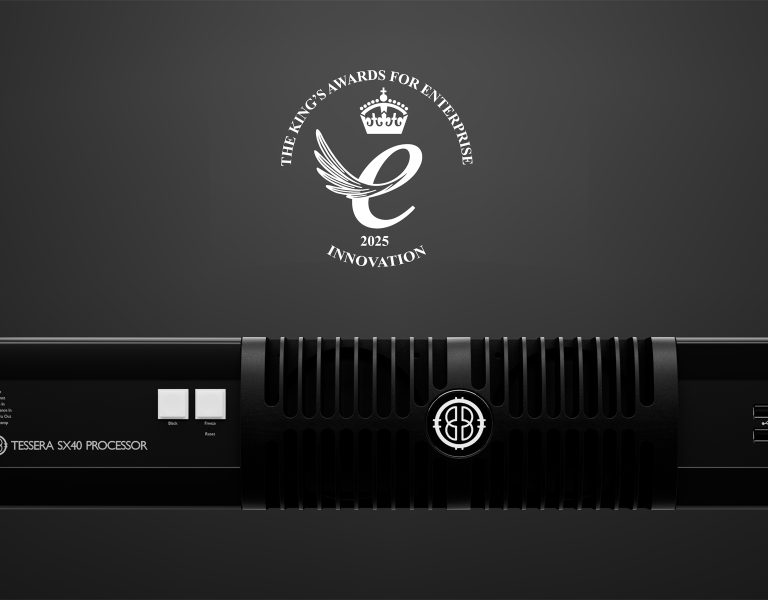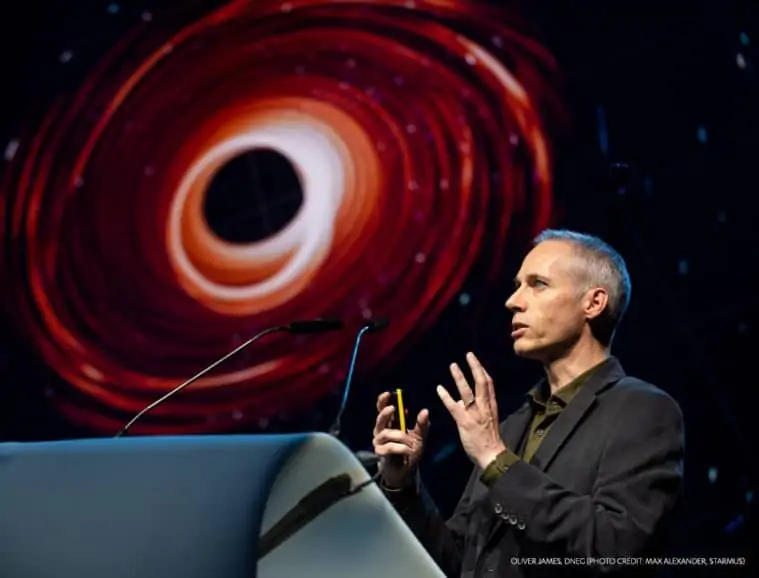
Visual effects and animation company DNEG has published a new video demonstrating how the Oscar-winning visuals created for Christopher Nolan’s 2014 film Interstellar correspond to the first image of an actual black hole, observed last year in the M87 galaxy using The Event Horizon Telescope.
During their work on Interstellar DNEG’s team, led by Chief Scientist Oliver James and VFX Supervisor Paul Franklin, collaborated with Nobel Prize-winning physicist Kip Thorne to create a simulation of a black hole that not only supported the film’s aesthetic and storytelling, but which was rooted in Thorne’s calculations.
At the time the film was being made, scientists were yet to capture an image of a black hole – areas of the universe where gravity is so powerful that not even light waves can escape.
The custom software designed by DNEG’s research and development team created a new way of visualising the gravitational lensing of a black hole. It allowed DNEG’s artists to explore this warped space and create the iconic images seen in the movie.
The work contributed to Interstellar winning the Academy Award for Best Achievement in Visual Effects in 2015 and led to the publication of two scientific papers by the DNEG team. However, it wasn’t until 2019, when an image of a black hole was finally captured, that the scientific accuracy of the visuals was recognised.
Oliver James, DNEG Chief Scientist, said: “I was astounded by the M87 images from the Event Horizon Telescope team, but there was a slight difference in the shape of their image and the one we created for Interstellar. The EHT image is roughly circular, while our images have a distinctive line crossing the black disc. I wanted to demonstrate how this difference is linked to the observer’s viewpoint.
We use science as a source of inspiration when creating movies. If these movies help connect audiences with science, then we’re doing something right, so we’re delighted to share this video.”
This comparison of DNEG’s imagery with the image captured was first shared at a talk given by Oliver James at the Starmus Festival in 2019. Kip Thorne has also spoken on the accuracy of the depiction to audiences. In his talk ‘The Warped Side of the Universe’ at Cardiff University in 2019, Thorne described how the final result of the collaboration with DNEG was an almost perfect representation of a black hole.
DNEG’s work with Kip Thorne hasn’t stopped there. The VFX house recently consulted with the physicist on the manipulation of the flow of time for another Christopher Nolan film, the critically acclaimed thriller Tenet, released to cinemas earlier this year.



